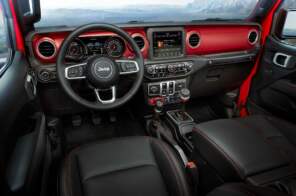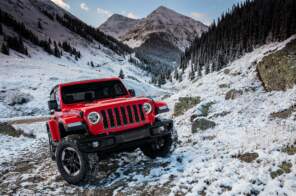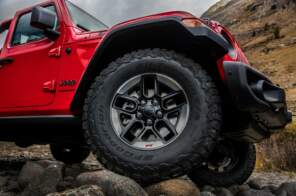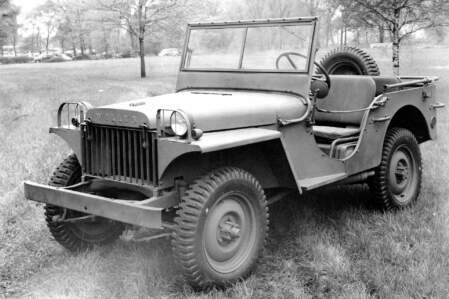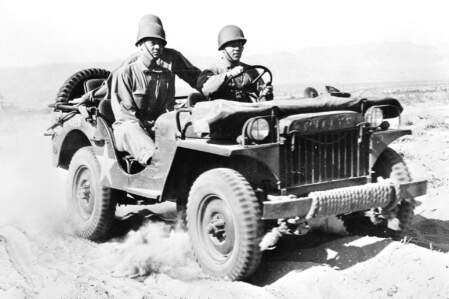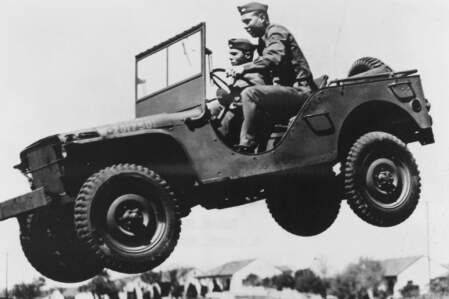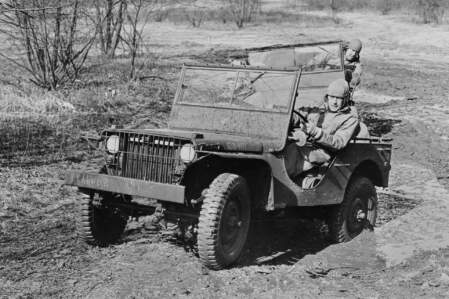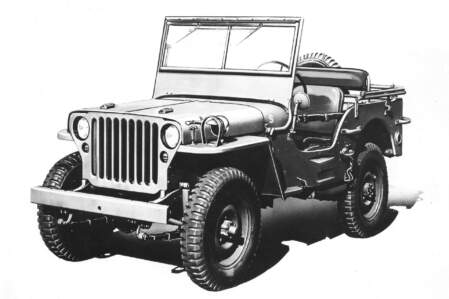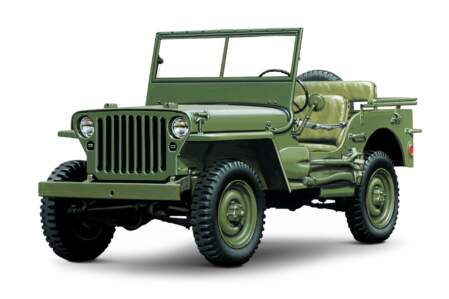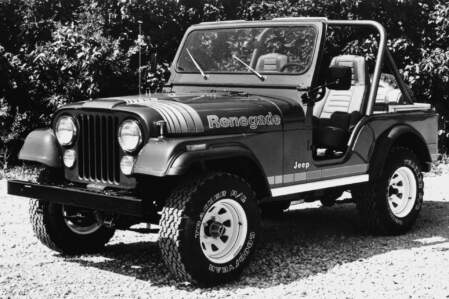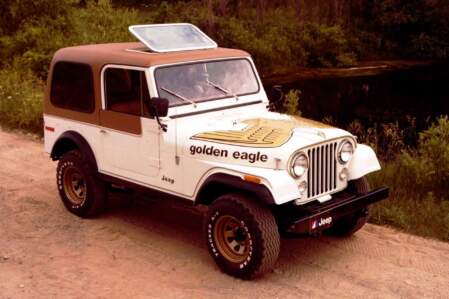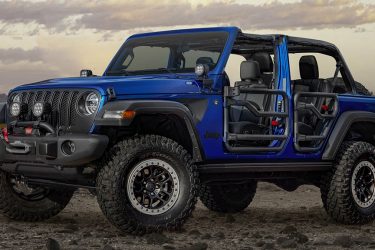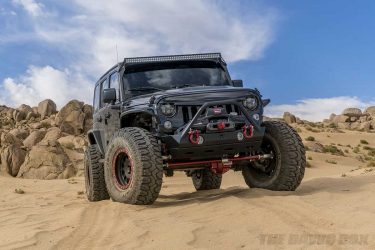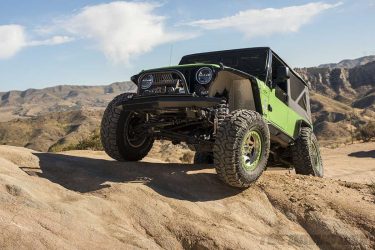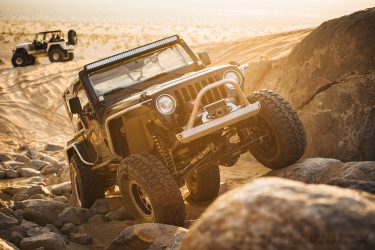The Jeep: From Willys to Wrangler
How the World’s Most Famous Go-Anywhere Vehicle Earned Its Stripes
If you had to pick a single candidate for “the most American car ever,” there are a lot of potential candidates. The Corvette would be near the top of the list—it’s always been “America’s sports car” from the original C1 racers at LeMans through the iconic split-window 1963 model and the C3 that defined the Apollo Era of American exceptionalism (and endured the dark days of smog restrictions and gas lines), all the way up to today’s C7 and upcoming mid-rear-engine C8 supercar.
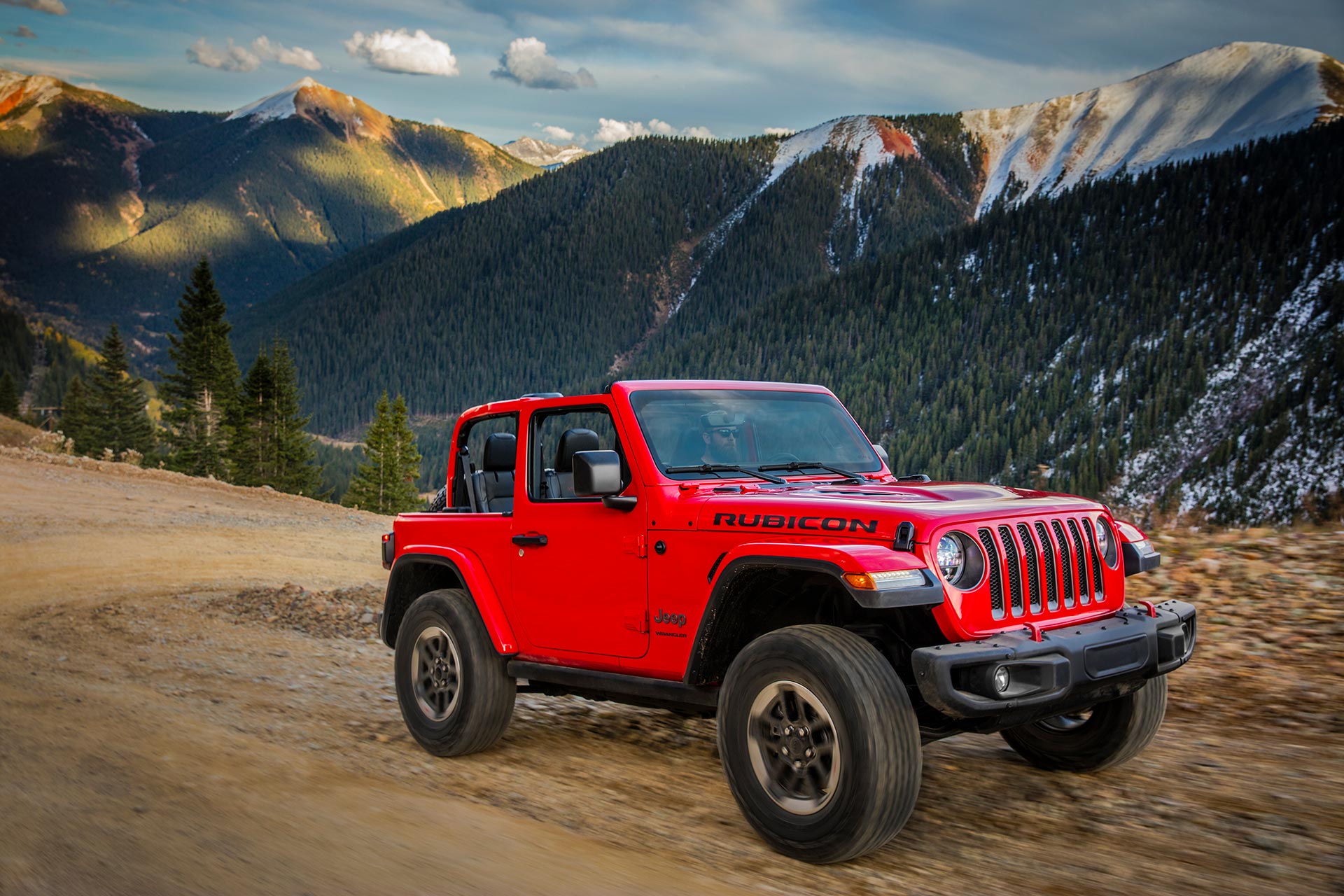
You could also make a case for the Ford Mustang that launched the Pony Car wars and spawned the Camaro and Challenger, or the “shoebox” Chevy sedans that became a favorite of hot rodders. The original muscle car, the Pontiac GTO, would also be on the shortlist, and even the Ford Model T would be a strong contender, thanks to the way it put car ownership in the reach of the working class and created the impetus for America’s shift from roads designed for horse-drawn conveyance to ones better-suited for cars and trucks.
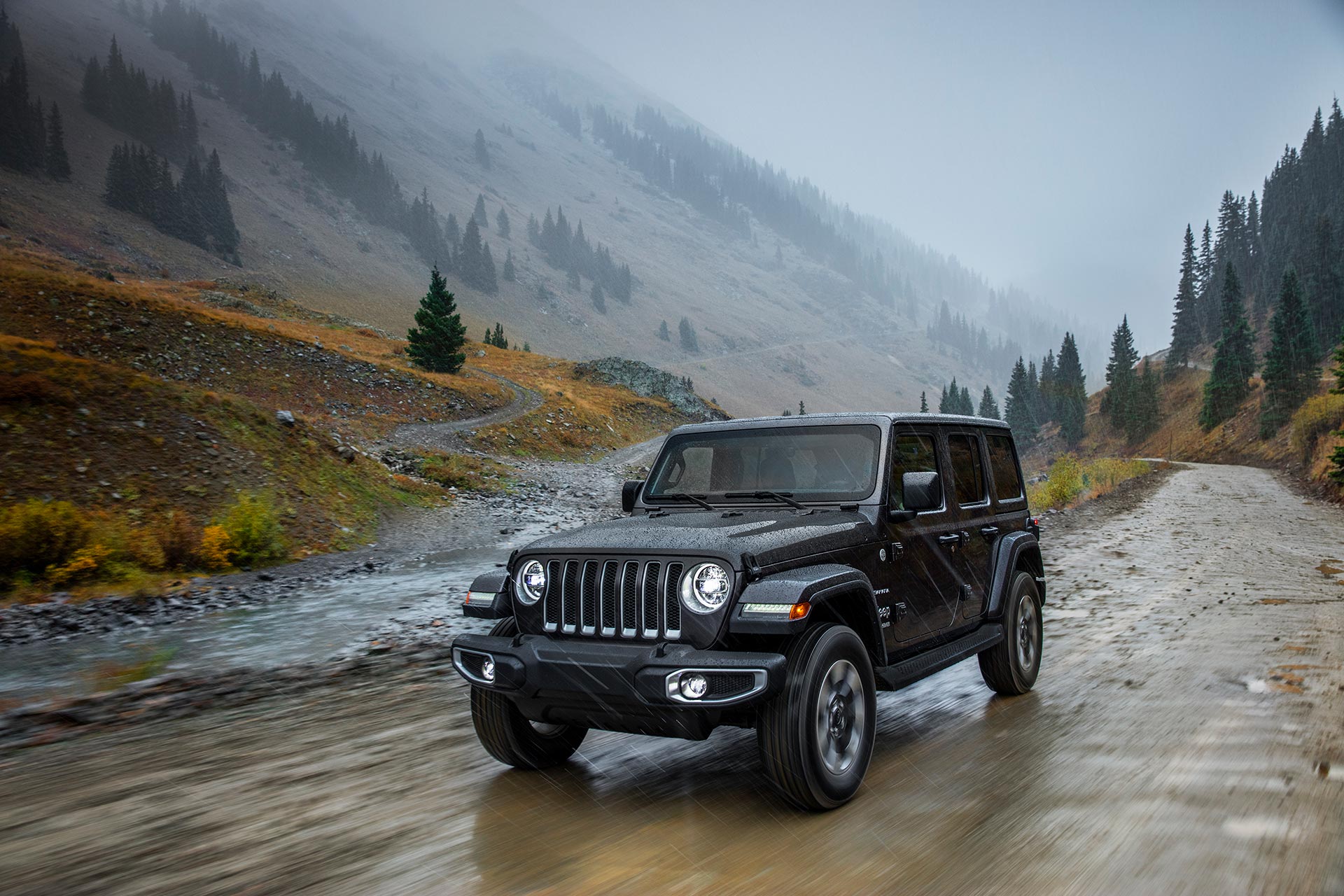
But out of all the possibilities, in the end there’s only one vehicle that truly deserves the title—the Jeep. In continuous production (and continually popular) since 1941 and showing no signs of ever falling out of favor, the iconic off-roader is the one motor vehicle that stands above the rest. Born in the shadow of looming global conflict, the original Jeep served admirably in the Arsenal of Democracy, transitioned to civilian life as a workhorse for farmers and ranchers, and evolved into a status symbol that never lost its off-road credibility.
While “Jeep” grew from a single, scrappy 4×4 light scout car into an entire brand that has encompassed multiple different platforms over the years, including today’s unibody SUV and crossover vehicles, what we’re really interested in is the MB, CJ, and Wrangler models that are first to mind when you hear the name “Jeep.” Here is their story.

Flat Fenders
The vehicle we know today as the Jeep began its existence as a US Army specification for a “Truck, ¼ ton, 4×4” just prior to America’s entry into the Second World War. Post-WWI, the country’s armed forces had been significantly drawn down and reorganized, and many experiments were in progress to determine how new technology would make the next conflict different from the static trench warfare that characterized the Great War.
…the original Jeep served admirably in the Arsenal of Democracy, transitioned to civilian life as a workhorse for farmers and ranchers, and evolved into a status symbol that never lost its off-road credibility.
Light trucks and cars had shown promise toward the end of that war as a way to conduct reconnaissance, quickly move troops, artillery, and supplies, and generally, replace the large numbers of horses that had previously done most of the heavy lifting. The Army had a number of vehicles already in development or production that ranged from a half-ton to 7.5 tons in payload capacity, but a need was recognized for a smaller, more agile vehicle in the quarter-ton capacity range for the reconnaissance and liaison role.
American Bantam, a manufacturer with a somewhat-troubled history of bankruptcy but plenty of experience with small cars, and Willys-Overland, another faltering Depression-era builder and seller of small cars, endeavored to produce prototypes to meet the somewhat-unrealistic specifications set out by the Ordinance Technical Committee: 4-wheel drive, a crew of three, a 75-inch wheelbase and 47 inch track width, a fold-down windshield, 660-pound payload, and an engine with a minimum of 85 pound-feet of torque, all weighing in at a scant 1,300 pounds empty. Oh, and by the way, bids were required in 11 days, with a deadline of 49 days for the first prototype and 75 days to deliver 70 test vehicles.
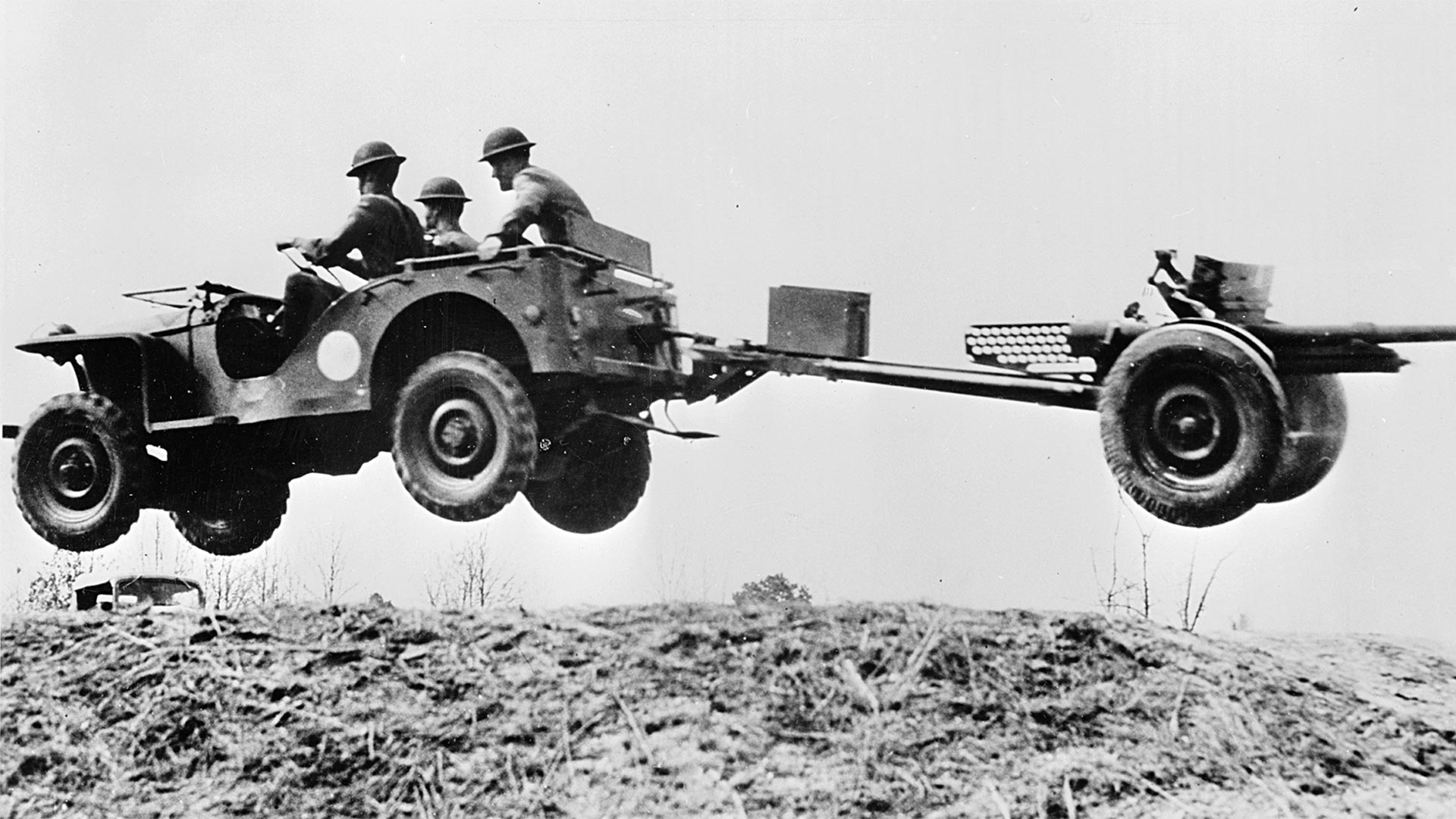
While Willys was the low bidder, they were passed over in favor of Bantam when they couldn’t commit to the incredibly short deadline, and the Army moved ahead with the project. Over the course of development, Willys and eventually Ford became involved, as Bantam didn’t have anything close to the production capacity that would be required for full-scale manufacturing. The specification evolved from the ridiculously-light 1,300-pound weight goal to a more sensible 2,160-pound maximum, and Bantam ended up being edged out of the project as the Willys MB and Ford GPW became the definitive production models, with the US Army securing the patent for what would be known as the WWII Jeep in 1942.
Over the course of the war, Willys would manufacture more than 360,000 MBs and Ford would build another 280,000-plus GPWs. Ford being Ford, while parts were mostly interchangeable between the two, many of the parts produced by Ford would be stamped with a stylized cursive capital letter “F” in the same font as the Ford logo.
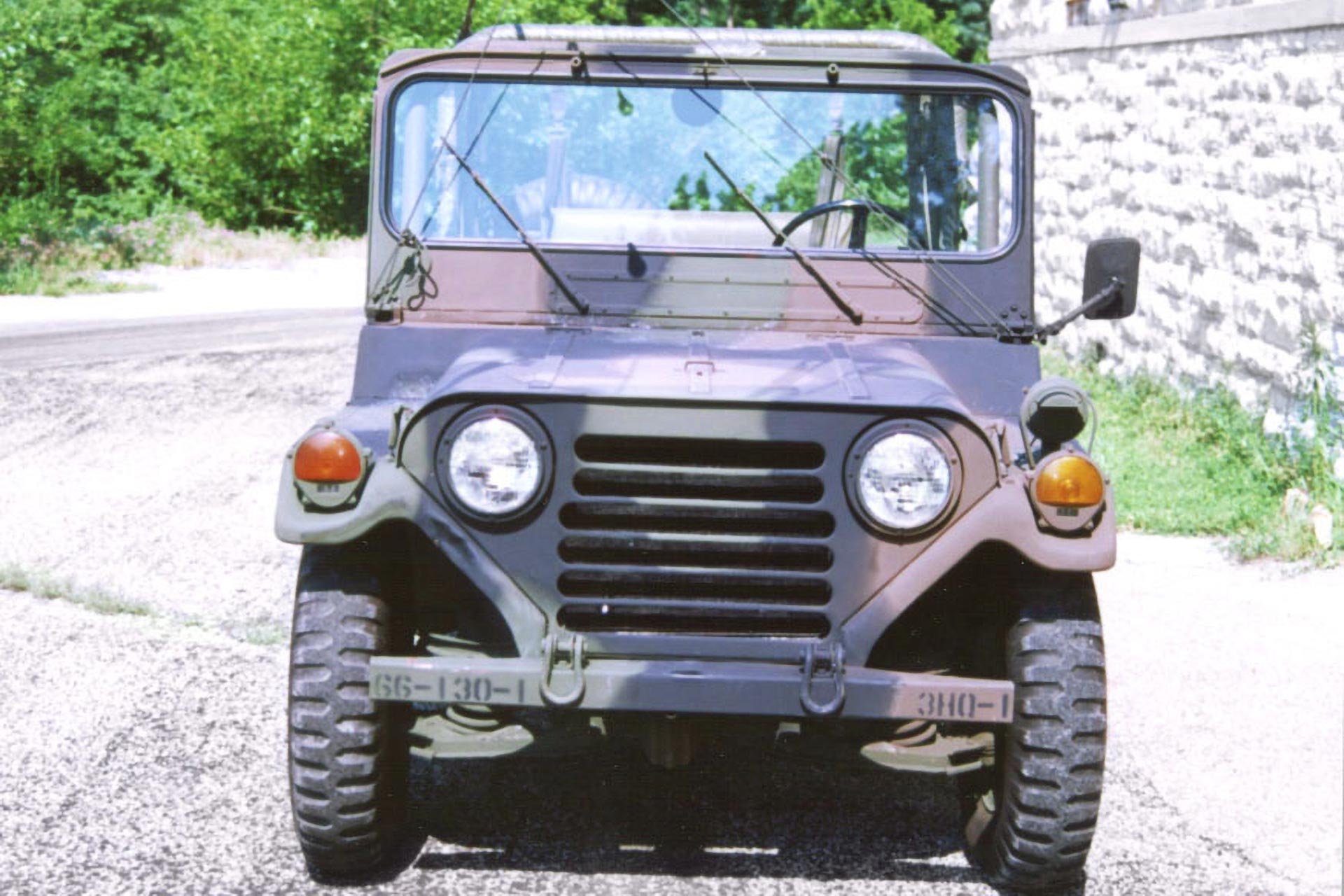
Post-War Production
With the Second World War drawing to a close, and all of America’s manufacturing corporations eyeing the future beyond the massive expansion they’d experienced since 1941, Willys-Overland was keen to find a way to turn the MB into something that could be sold on the civilian market. In 1944 with victory in sight, they began to work on prototypes for the “Civilian Jeep,” or simply CJ, mainly consisting of removing military-specific details like blackout lights and adding a tailgate. The initial conversions would later be referred to as the CJ-1, though none have survived and details are scant. The follow-on CJ-2 prototypes would be another limited experiment with only a few scores produced for internal company testing of more civilian-friendly modifications, and a few still exist today.
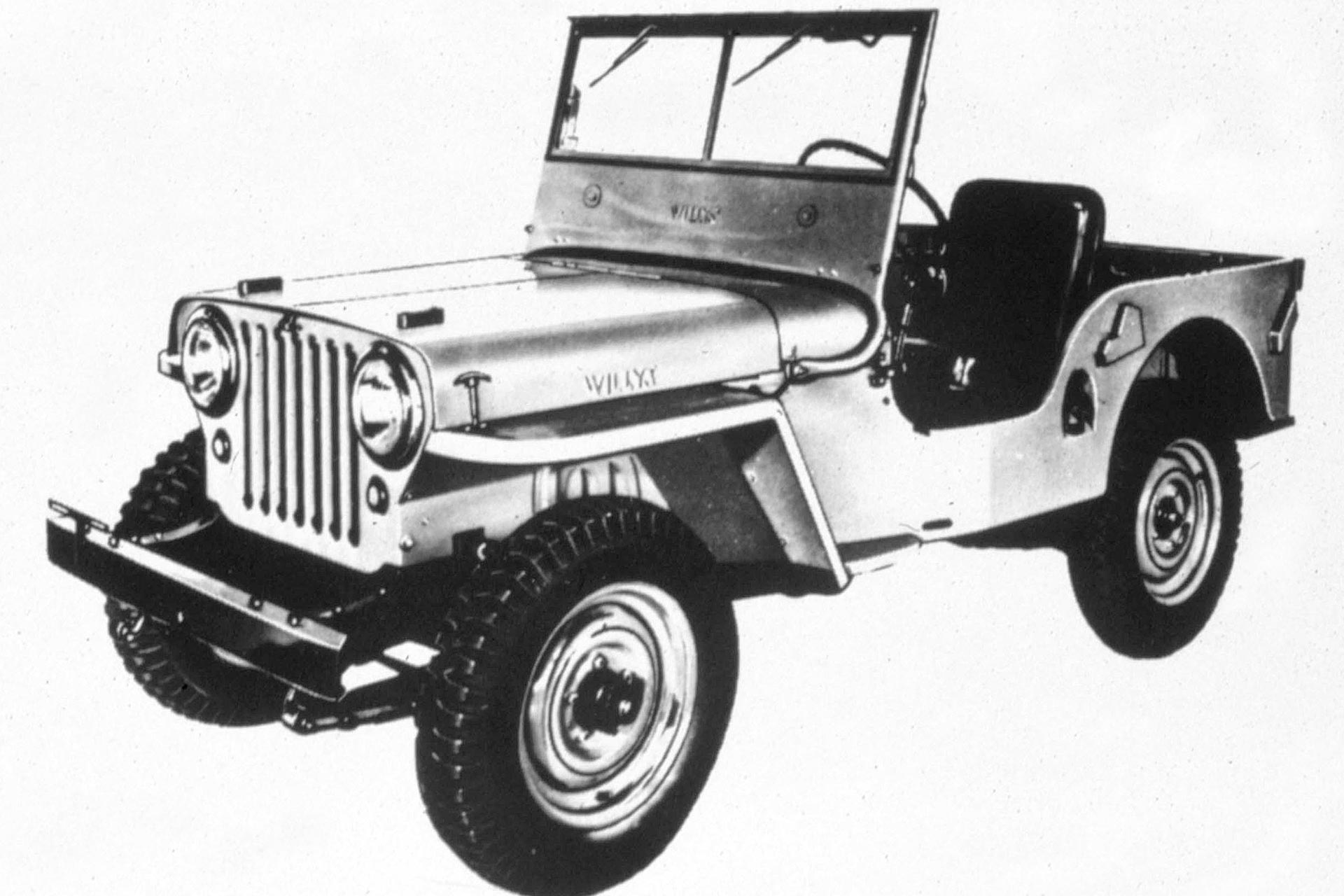
These led to the CJ-2A, the first true production civilian Jeep, which introduced the now-trademarked 7-slot vertical grille (previous models had 9) and was primarily intended for the agricultural market with a wide range of factory accessories like winches, snow plows, mowers, and even welders powered off of the engine’s PTO mount. More than 200,000 were sold between the end of the war and 1949, in a bewildering array of possible configurations that have become a collector and restorer playground/nightmare.

The next model, the CJ-3A, debuted in 1949 and included more detail changes to improve the transmission, axles, and suspension, and was adopted to replace the now-elderly wartime MB and GPW Jeeps in US military service as the Willys MC, designated the “Utility Truck, M38.” 130,000 or so were produced before being replaced by the CJ-3B in 1953, with more minor changes. Kaiser (yes, the same car manufacturer that eventually spawned the healthcare company) bought Willys-Overland that same year, and licensing of the Jeep design was expanded from Mitsubishi (who had produced the 3A in post-war Japan exclusively for police and other government use) to also include Mahindra in India, who would continue to grind out CJ-3B-based vehicles all the way through 2010.
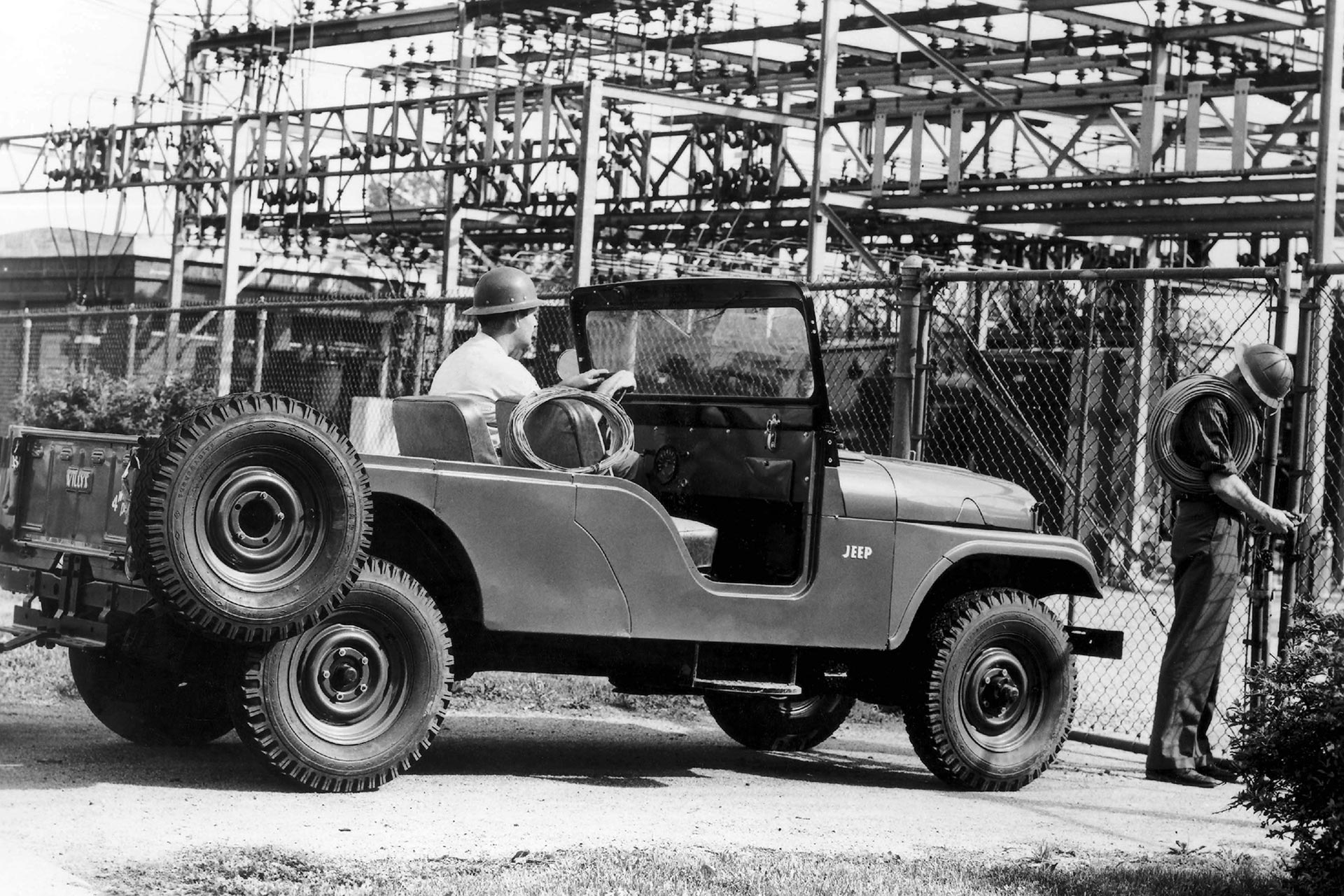
The CJ-4 moniker was applied to a stillborn concept project in 1950-51, so the next Jeep model the world would see was the CJ-5. In various versions, it would remain in production from 1955 to 1983, and it soldiered on through many changes – not the least of which came when Jeep was sold to American Motors Corporation in 1970. In military service it would be known as the M38A1, and in 1972 AMC engaged in a major revision to the platform that increased the wheelbase by 3 inches, added overall length, and increased the size of the engine bay to accommodate both a 304 cubic inch V8 and 3.8 and 4.2 liter straight six engine options.
…Jeep fans absolutely lost their minds, with the YJ being panned by hardcore enthusiasts as an unworthy successor to the legendary CJ series.
AMC’s marketing increasingly targeted mainstream buyers instead of the agricultural and utilitarian appeal previous Jeeps had cultivated. Multiple appearance, accessory, and performance packages were offered, leaning heavily toward the stickers-and-stripes design ethos of the 1970s and early ‘80s.
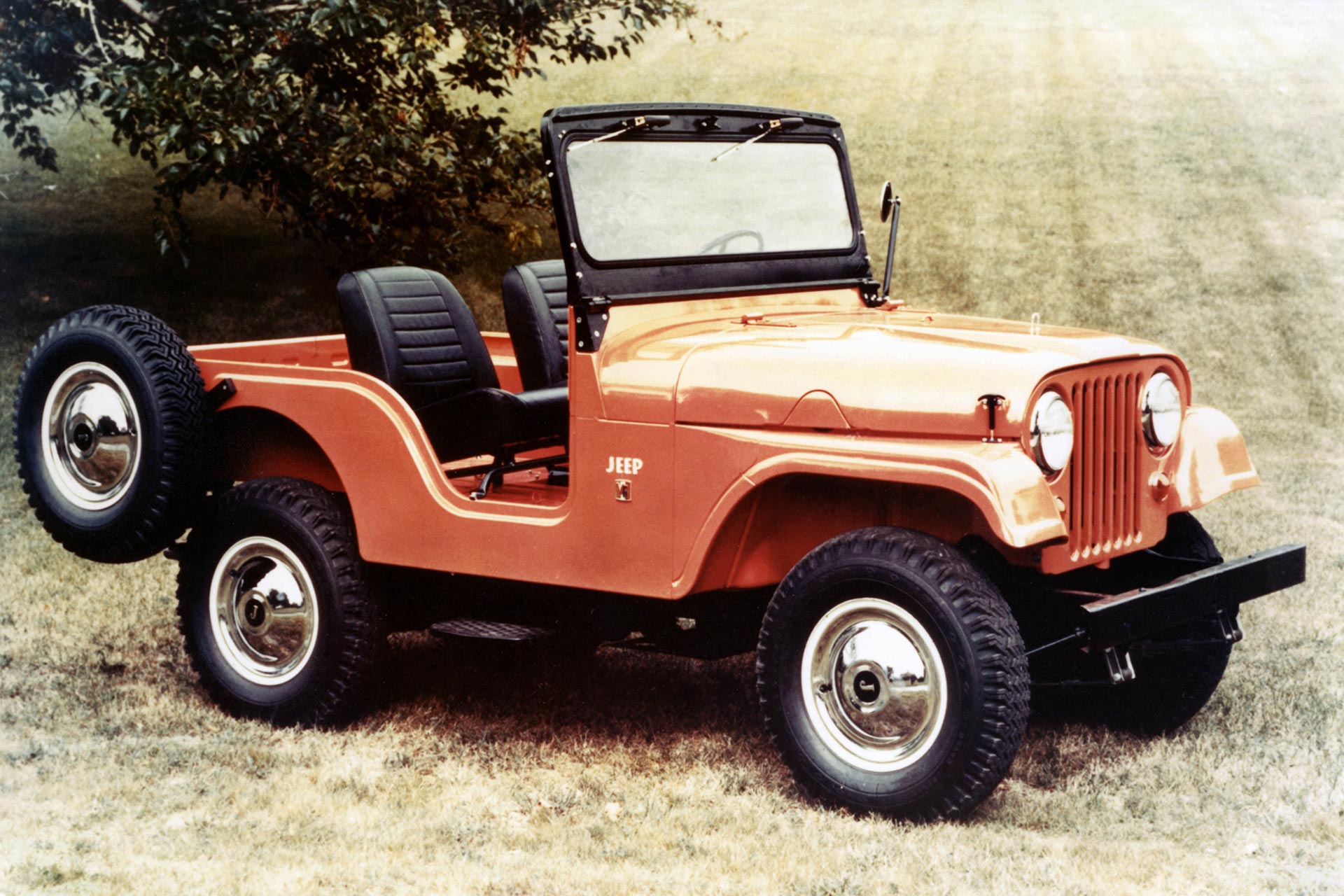
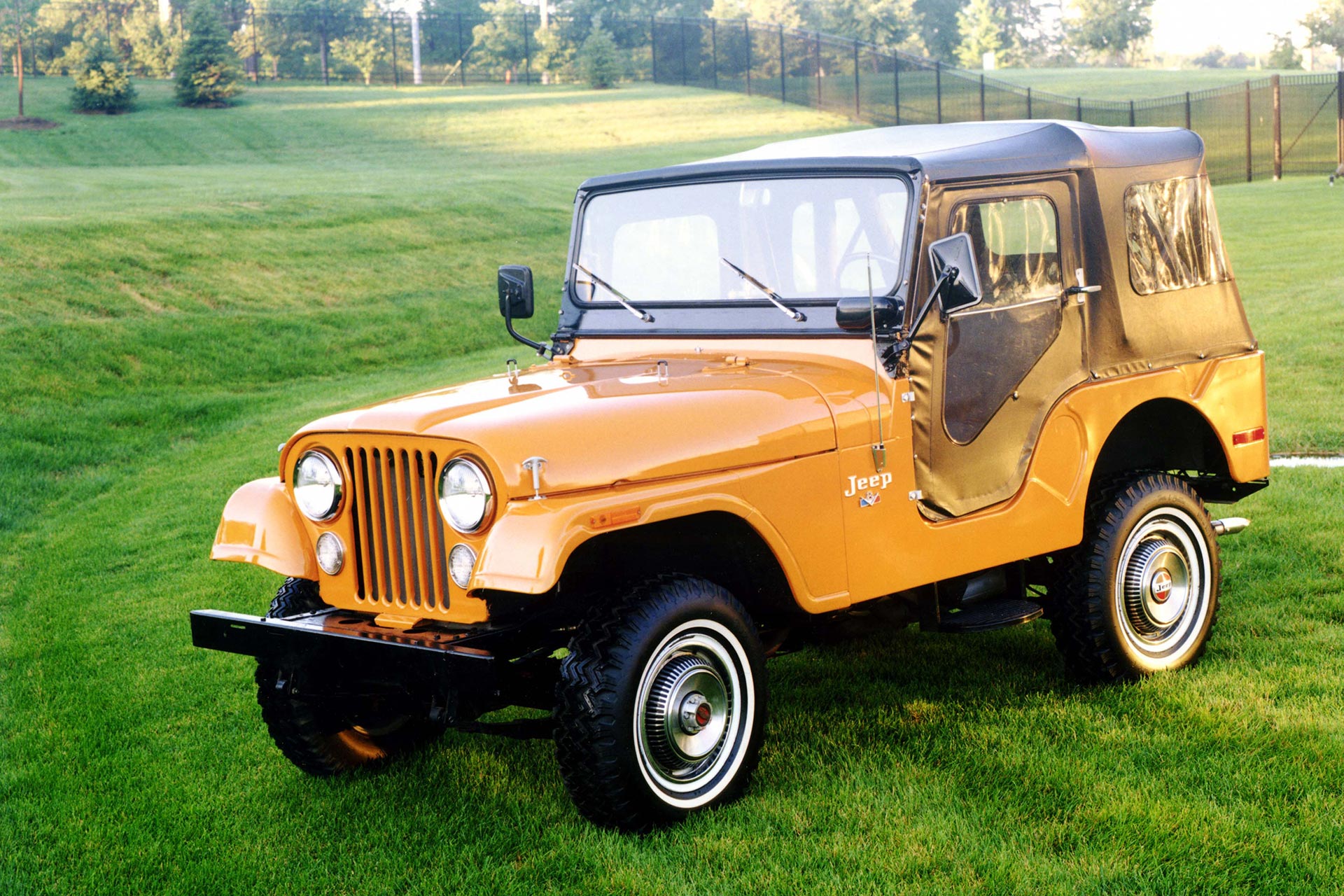
A stretched-wheelbase version of the CJ-5 was designated as the CJ-6 and was produced between 1955 and 1981, but most of the 50,000 or so units made ended up overseas, with US availability ending in 1975. As a hint of things to come, a 4-door version was available, but never caught on domestically. The definitive “Civilian Jeep” model, the CJ-7, debuted in the 1976 model year in the US in production that overlapped its predecessor. It was visually distinctive from the CJ-5 primarily due to different door cutouts, but also featured changes to the ladder frame beneath the bodywork that allowed wider placement of the rear leaf springs for more chassis stability—the CJ-5 had been somewhat unfairly faulted for being dangerous in sudden obstacle avoidance maneuvers, and the suspension improvements were intended, in part, to address that issue. As the last of the classic Jeep models that could draw their lineage directly to the original WWII MB and GPW, almost 380,000 were built before the sun set on the CJ series in 1986.
Meet the Wrangler
For 1986, AMC (now owned by French auto conglomerate Renault) introduced a mostly-clean-sheet replacement for the CJ-7 named the Wrangler, with the internal chassis code YJ. The redesign continued the trend toward more safety and comfort features, but retained the Jeep essentials—leaf-sprung live axles front and rear, body-on-frame construction, a folding windshield and removable doors, and a strong bias toward off-road competence over everyday practicality. Nevertheless, Jeep fans absolutely lost their minds, with the YJ being panned by hardcore enthusiasts as an unworthy successor to the legendary CJ series. The distinctive square-headlight Wrangler continued in production through the purchase of the Jeep brand by Chrysler in 1987, with total production topping 685,000 units before the final 1995 production year.
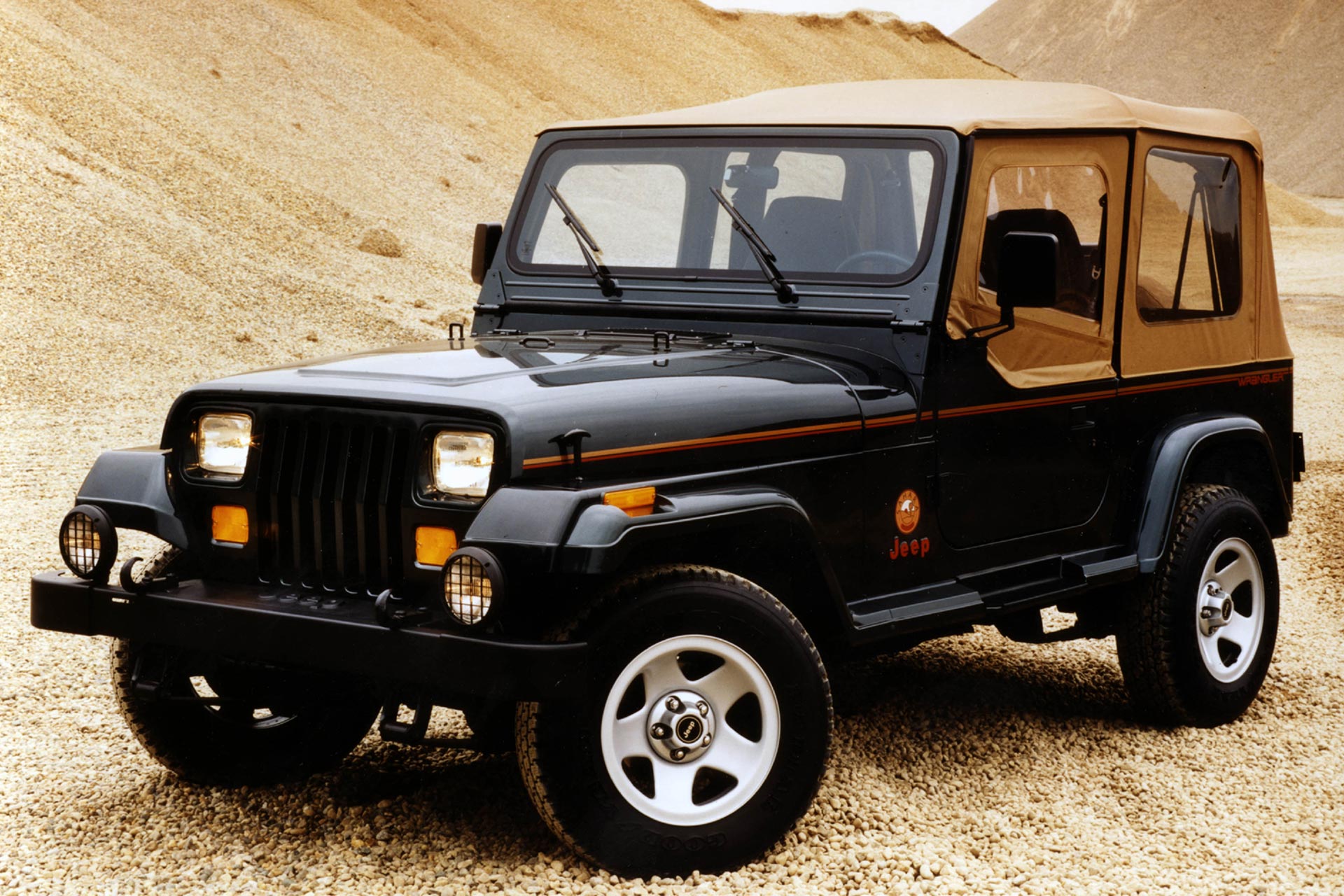
Remaining 1995 YJ production models continued to be sold through the “missing” 1996 Wrangler model year, and the new TJ made its debut for 1997. Bowing to the power of nostalgia, the new Wrangler went back to round headlights, but introduced a major change to the suspension in the form of coil springs in place of the front and rear leaf spring setup that dated back to 1940. Once again, Jeep purists were enraged, but the Wrangler gained another major improvement in everyday on-road practicality in exchange for essentially no loss of off-road competence. The top engine option remained as a modernized 4.0L version of the venerable AMC straight-6, with 4-cylinder power in base models. A “Wrangler Unlimited” model, still retaining the 2-door body configuration but stretched 10 inches in wheelbase and 15 inches overall compared to the standard TJ, debuted for 2004, offering better room in the back seat and greatly improved towing capability.
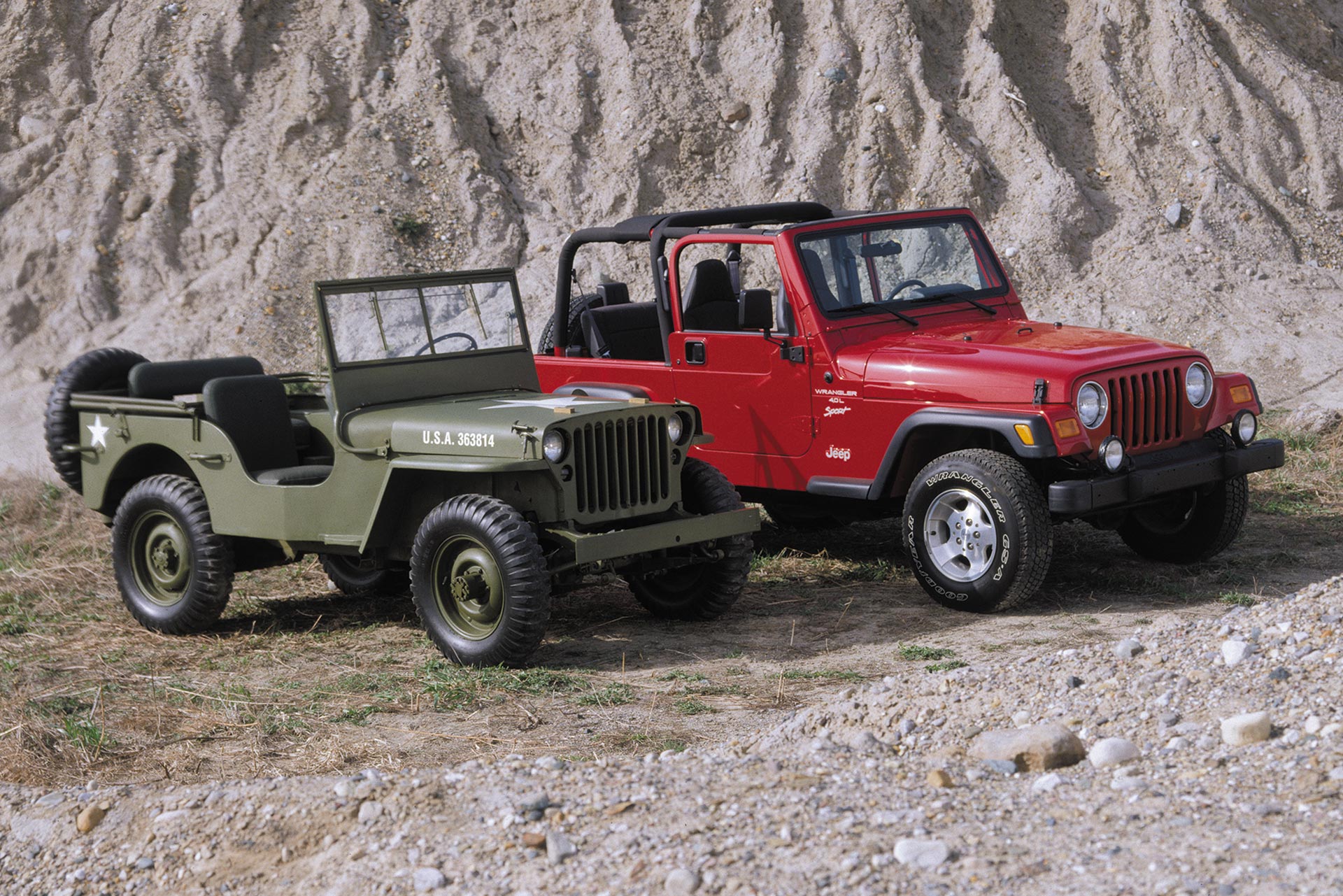
TJ production wrapped up in 2006, and Jeep introduced the JK Wrangler for the 2007 model year. While still retaining live axle suspension and styling that was very similar to the TJ, the JK was a complete redesign that was wider and longer in wheelbase (though shorter overall) than its predecessor. Most importantly, the Wrangler Unlimited, AKA the JKU, introduced a true 4-door option with a 20-inch longer wheelbase while being less than 3 inches longer overall than the previous TJ Unlimited. This decision turned out to be hugely successful, with the overwhelming majority of JK buyers opting for the 4-door Unlimited model. Finally giving in to the inexorable march of progress, hardcore Jeep fans have embraced the JK/JKU, and the aftermarket has shown incredible enthusiasm for the third-gen Wrangler with an enormous variety of suspension, engine, and body upgrades.
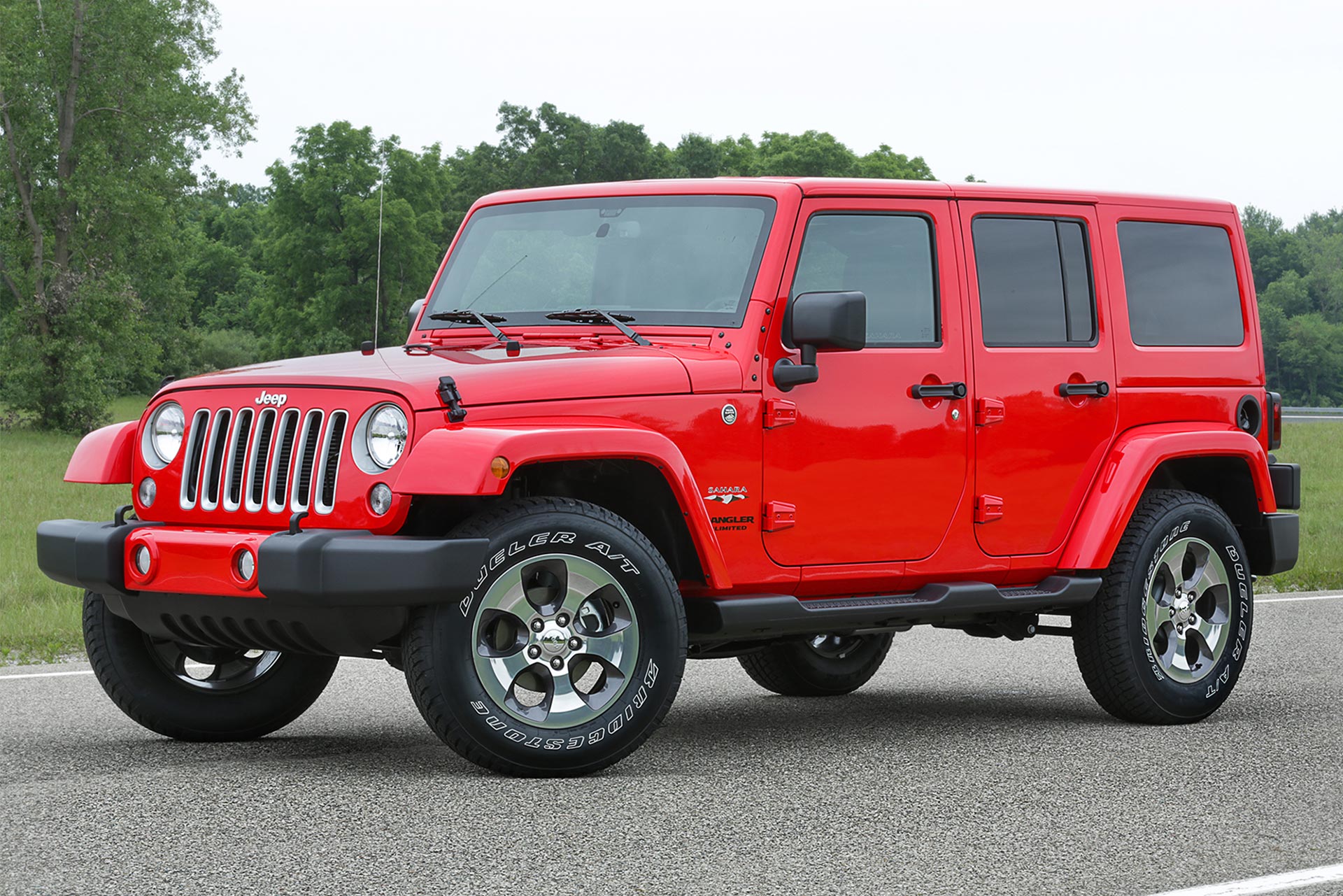
For the 2018 model year, Jeep introduced the JL, which continues the tradition of body-on-frame construction and live front and rear axles, with more concessions to the luxury and comfort features buyers of the increasingly-expensive Wrangler have come to expect. While it remains the most competent off-road domestic vehicle you can buy off the showroom floor, especially in “Rubicon” trim, today’s Wrangler has come a very, very long way from the tiny “go-devil” known to US troops in WWII. Over the past eight decades, Jeeps have gone from a thrown-together way to haul a few soldiers and their gear across inhospitable terrain to luxury mall-crawler and every point in between. In the process, they’ve become the most uniquely American form of transportation, recreation, and personal expression, and there’s no end in sight.



